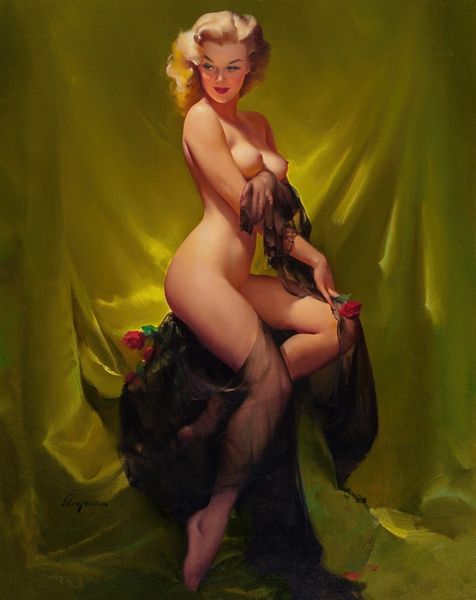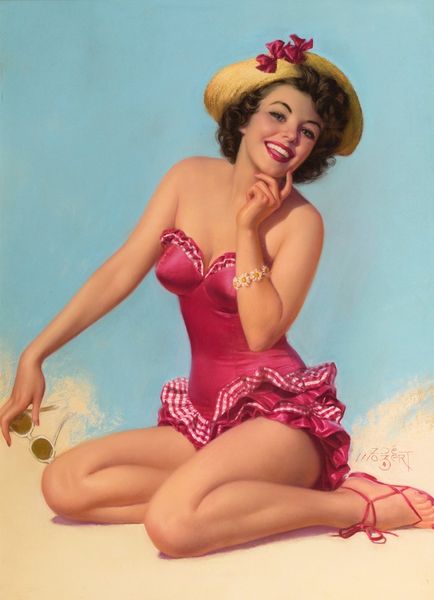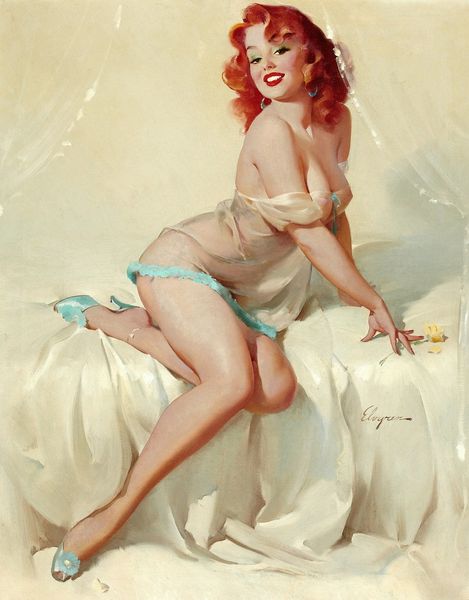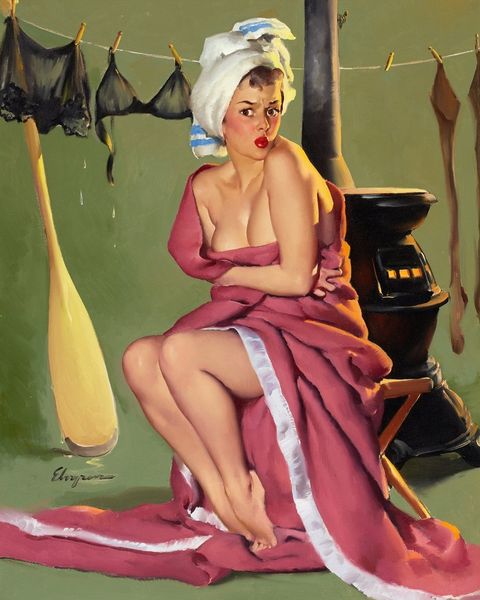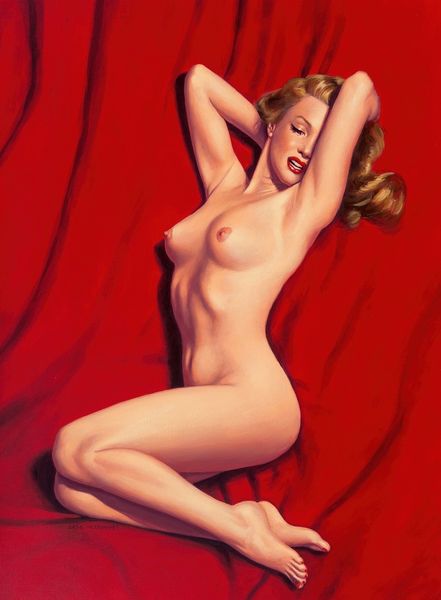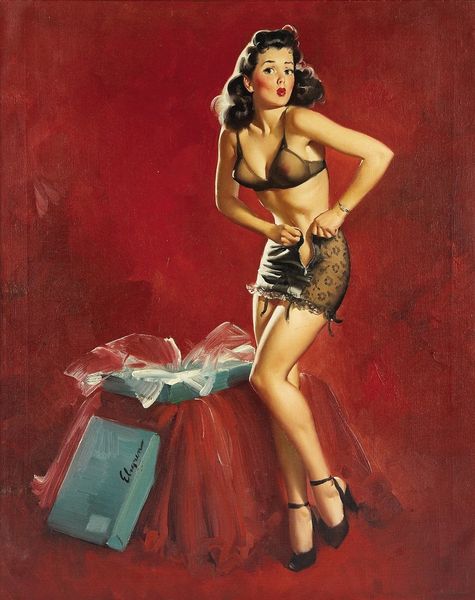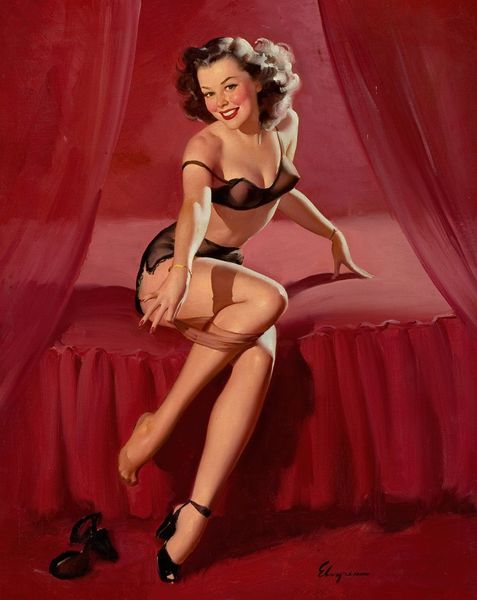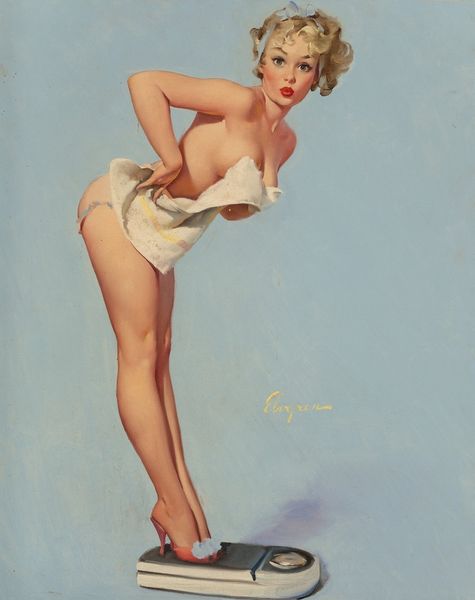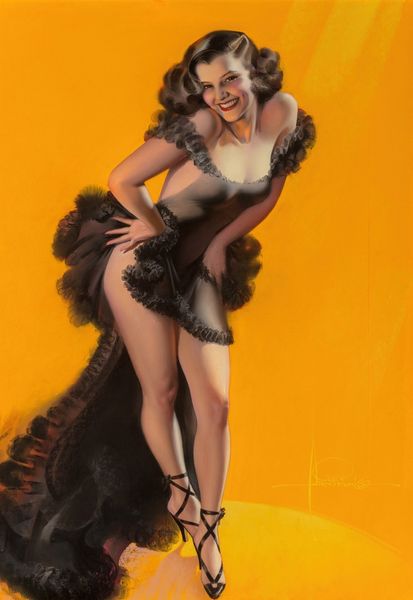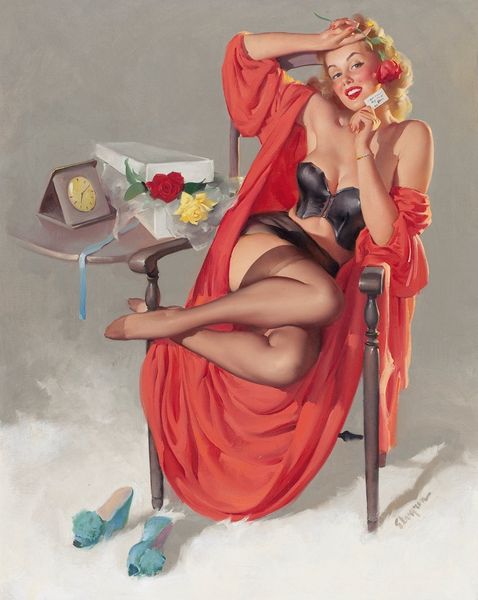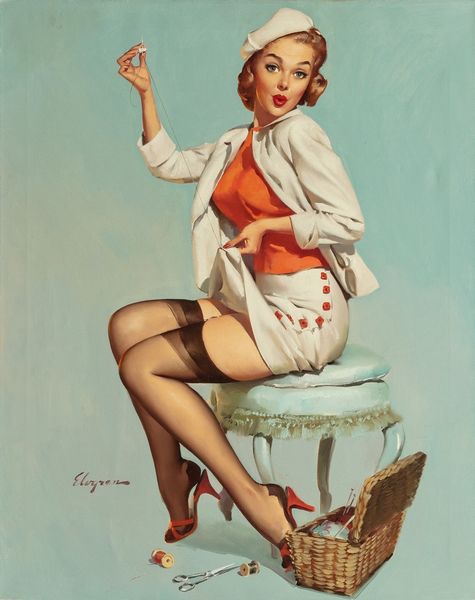
Copyright: Modern Artists: Artvee
Curator: This is "Cee Bee," a 1953 oil painting by Gil Elvgren. The artist, widely recognized for his contributions to pin-up art, creates a composition centered around the female form, rendered here with a Romanticist sensibility. Editor: It's so overtly flirtatious, isn't it? All scarlet backdrop and sly, sideways glance. The stark, primary hues are reminiscent of Technicolor, imbuing her image with both vibrancy and that somewhat manufactured gleam of the post-war period. Curator: Let's not forget the complexities of these types of portrayals. Elvgren came up through the Chicago Academy of Art in the late 1930s, absorbing social realism aesthetics. This artwork is also made in the 1950's which is, in one sense, an echo of the kind of sexual oppression of the pre-feminist moment. However, one can also make a reading about autonomy by analyzing the way that Elvgren positions her, front and center, as an active object of viewing, a reclamation of the gaze on her own terms. Editor: Ah, the active versus passive reading. But to my eyes, the bright yellow cloth with the dedication holds symbolic power. It suggests an idealized gift or offering, with roots in mythology and folklore: a symbol of fertility and warmth. The inscription on the cloth, "To my good friend Harold, Gil", elevates the implied personal connection here beyond the model/artist relationship, becoming something like a coded message with personal intent. Curator: Exactly, and the material's semi-transparent nature is itself evocative, creating a push-and-pull dynamic with concealment and revelation as part of the painting’s cultural rhetoric. Editor: In short, her image is both a reflection and a fantasy. Even her playful adornments -- the ribbon in her blonde updo and that dainty black choker-- signal elements of allure and cultural expectation. Curator: It encourages one to think about these so-called "pin-up" paintings within their era but with awareness of the tropes around them and how they’re seen today. Editor: Yes. Despite its possible political baggage, it makes one wonder about the story and intention behind the inscription. I love how images continue to provoke us.
Comments
No comments
Be the first to comment and join the conversation on the ultimate creative platform.
